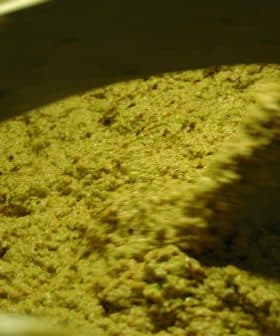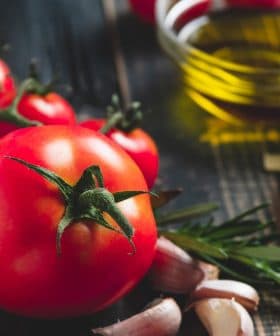A Cheap, Easy Way to Quantify Biophenols for the EU Health Claim
A group of researchers has shown how an easy method can be applied by small labs and producers to certify compliance with Europe's polyphenols health claim.
Researchers from the University of Bologna and University of Vigo proposed a simple and cost-effective colorimetric assay using the Folin-Ciocalteu reagent to quantify phenolic content in extra virgin olive oils, in order to meet EU health claim regulations. The findings were published in the European Journal of Lipid Science and Technology, showing that this method could be efficiently used by small labs and producers to verify compliance with polyphenol health claims.
A group of researchers, including Enrico Valli, Alessandra Bendini, Giuseppe Di Lecce and Tullia Gallina Toschi from the University of Bologna, Patricia Reboredo-Rodríguez and Jesus Simal-Gándara from the University of Vigo, proposed how to use a simple analytical method to quantify the phenolic content of extra virgin olive oils in order to satisfy the requirements introduced by the EU Regulation 432/2012, which establishes a list of permitted health claims made on foods.
The team published its findings in the European Journal of Lipid Science and Technology.
“As it is well known, there are sophisticated chromatographic techniques, such as the high-performance liquid chromatography (HPLC) coupled to ultraviolet-visible or mass spectrometry detector that are used to evaluate the phenolic content of virgin olive oils,” Di Lecce explained.
“However, these systems require very expensive analytical tools and qualified technicians, while the promising results obtained in this preliminary study show that the simple and cheap colorimetric assay based on the use of the Folin-Ciocalteu (FC) reagent can be also efficiently applied to verify the compliance to the polyphenols health claim introduced by the EU Regulation.”
In order to properly convey the healthy properties of extra virgin olive oil according to the EU regulation 432/2012, it is necessary:
- to share an analytical protocol to determine the amount of hydroxytyrosol and its derivatives having a demonstrated effect of protection of blood lipids from oxidative stress;
- to check, based on this protocol, if EVOOs satisfy the EU requirements for including the specific health claim on the label.
The FC method is a well-known colorimetric assay that requires only common and cheap equipment and can be executed in any laboratory. It is commonly used for the evaluation of phenolic compounds in hydro-alcoholic extracts of EVOO.
Based on a preliminary study, the researchers proposed using hydroxytyrosol to express the results obtained with the FC method. “Tests carried out by statistical software found FC data to be fully comparable with those obtained, after hydrolysis, with the HPLC-UV method using hydroxytyrosol and tyrosol to express the results,” Enrico Valli concluded.
The promising findings, which need to be confirmed by analyzing a large number of samples to draw final conclusions, show how an easy method can be efficiently applied by small labs and producers to verify or certify the compliance to the polyphenols health claim. This is in agreement with the increasing need to propose rapid and innovative instrumental approaches for quality and authenticity of olive oils, as reported by some of the authors in a recently published review.
With €5 million of financial support, the Horizon 2020 EU OLEUM Project, recently won by a consortium coordinated by Tullia Gallina Toschi (University of Bologna), has the overall objective to assure the quality and authenticity of olive oils at a global scale.
Within the framework of this project, a specific task led by Maria Tsimidou (Aristotle University of Thessaloniki) will be devoted to the setup of a reliable protocol for the determination of phenolic compounds in virgin olive oils according to the health claim. Further study, involving many laboratories around the world, will be made possible by the OLEUM Project to innovate and harmonize the quantitative determination of olive oil polyphenols.









